A Symphony of Colors – The Gio-ji Temple in Arashiyama

The Gio-ji Temple lies in the quiet of Arashiyama’s back quarters, its petite garden covered in moss. Its humility is deceiving. Unlike the bigger temples, such as Tenryu-ji, Jojakko-ji or the Nison-in Temple, Gio-ji appears, at first glance, to pale significantly in terms of the heritage that other temples rightly take pride in. Yet Gio-ji Temple has a history that moves one to tears. Its story illuminates the weight of Buddhism as a personal faith, in the ways that it lifts human beings from dramatic times of emotional suffering.
Speaking of moss, the Saiho-ji Temple is known as the “moss temple.” It requires advanced reservations to visit. If you did not get to see the moss temple, you may consider the Gio-ji Temple to have presented a scenery along the same theme.
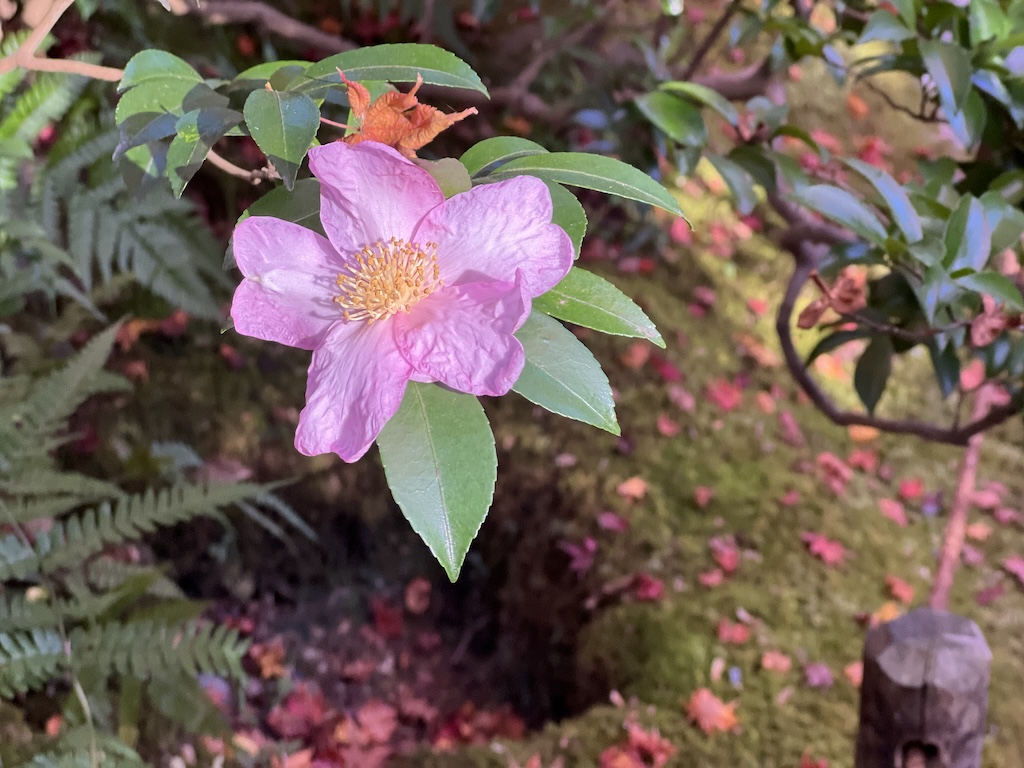
A Sanctuary for the Heartbroken Souls at the Gio-ji Temple
The Nonomiya Shrine of Arashiyama was the site where imperial priestesses went through their purification ritual before being sent off to the Ise shrine as the representative from the imperial court. It also comes within the literary tradition of Japan as the setting of an exceedingly beautiful, bittersweet love story.
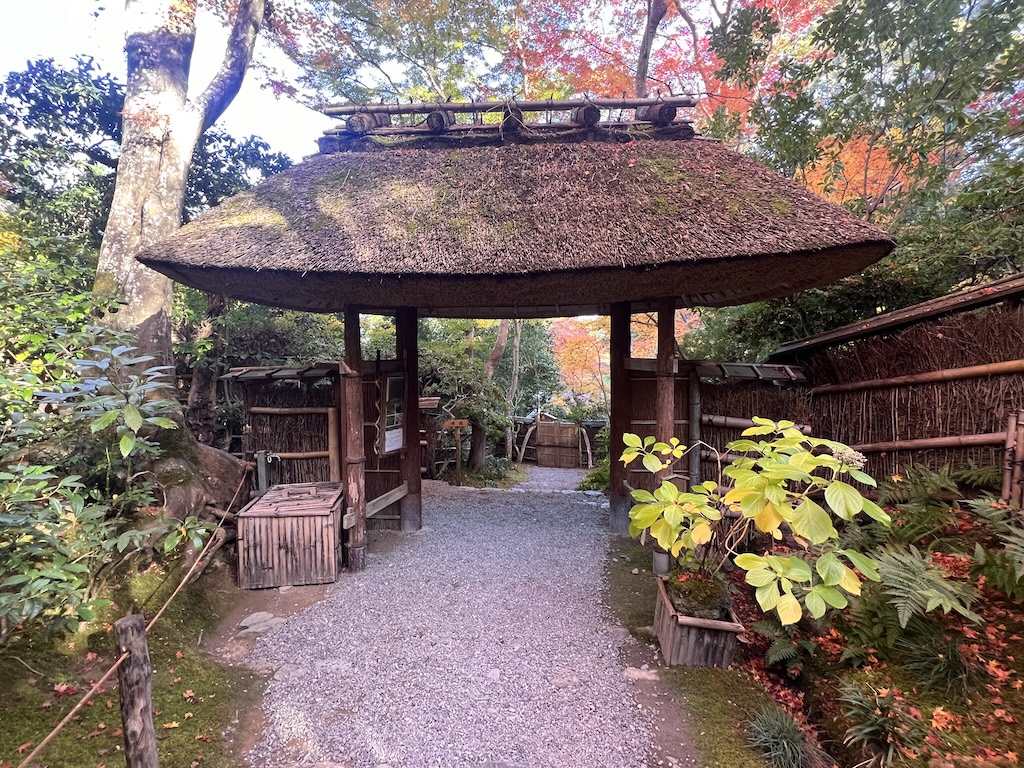
In Gio-ji Temple, the role of women once again comes into the spotlight. The history was a legend retold. During the Heian period, Shirabyoshi was a popular form of entertainment. The female performer sang and danced in a simple rhythm, and they dressed in men’s attire as they performed. The women that did Shirabyoshi were very talented in singing, dancing and poetry. Although some might call them courtesans, they were, first and foremost, entertainers.
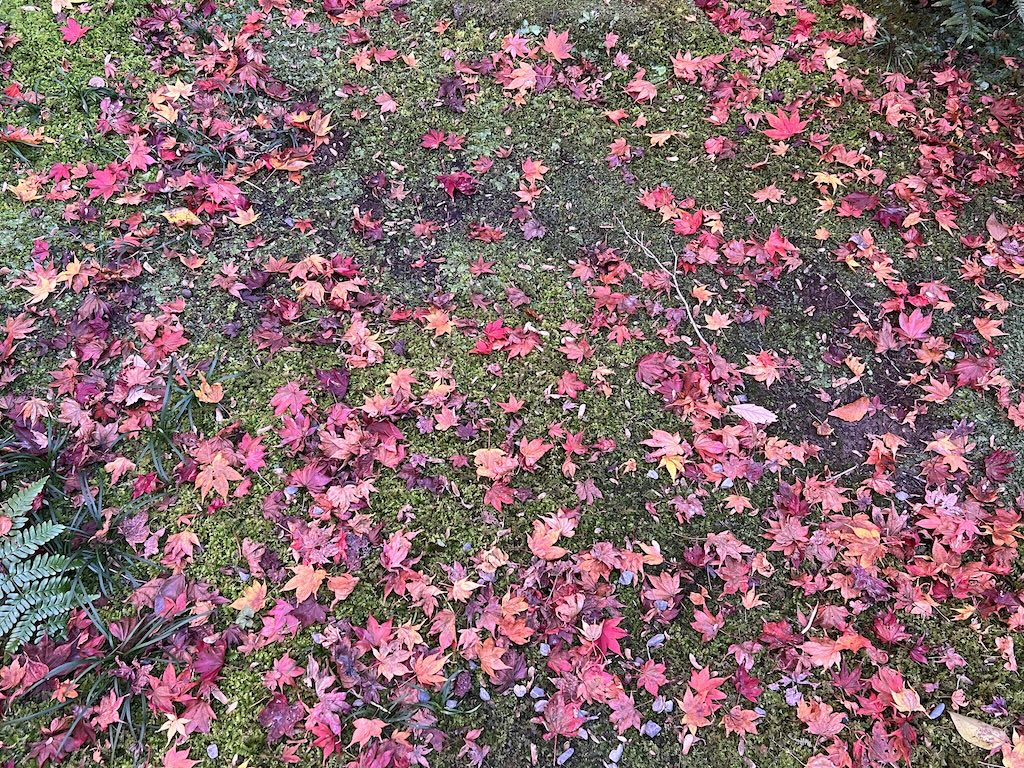
Our protagonist is the beautiful woman Gio, who performed before the nobility in Kyoto during the late 12th century. Her performances captivated the powerful military leader Taira no Kiyomori. He took her in as his favored consort, but this was no happy ending for Gio. Taira no Kiyomori then fell for another dancer named Hotoke Gozen. Gio fell out of favor, and in the pain of unrequited love and humiliation, she made a critical decision to leave her former life behind.
Gio decided that she would retire from her life as a performer. Along with her mother and sister, Gio arrived at Gio-ji Temple, which was to be named after her, to live a life of reclusion as a Buddhist nun.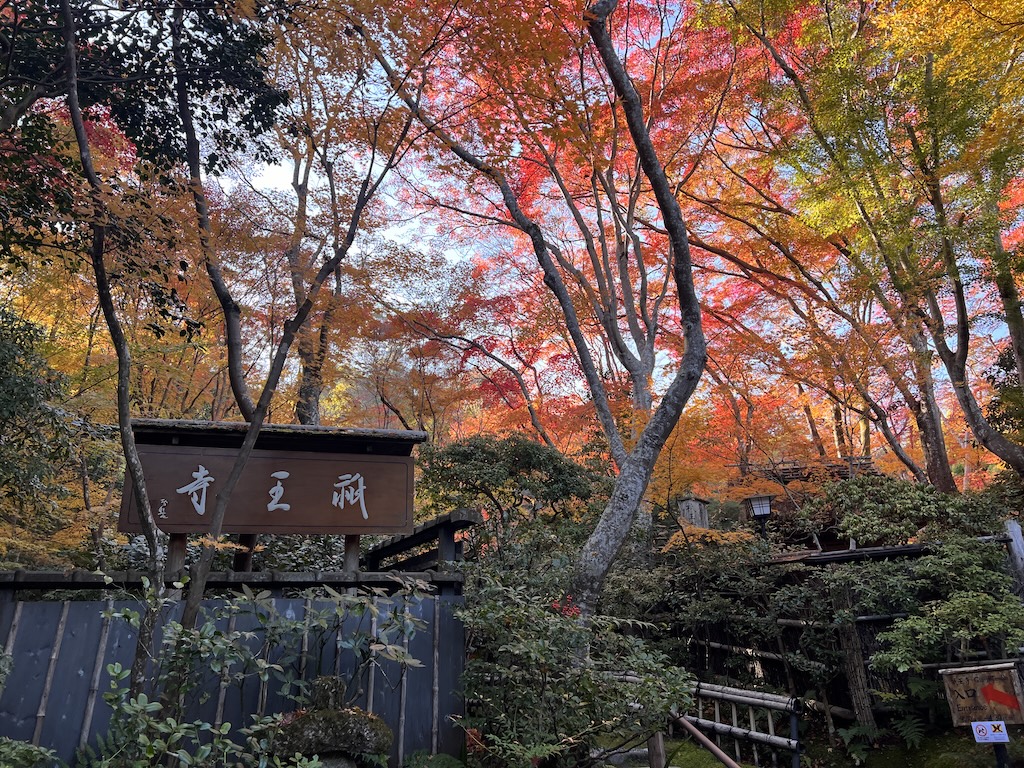
As fate goes, Hotoke Gozen would eventually join Gio in the Gio-ij Temple herself, seeking forgiveness and a redeemed, quiet life of Buddhist asceticism as well. A recurrent theme in this tale is the idea of karma. As these women’s former lives were entangled in webs of jealousy and rivalry, Buddhism came to them as the final answer for spiritual resolution. Buddhism presented a higher calling that enabled them to rise above the common desires for love, material pursuits, power and fame.
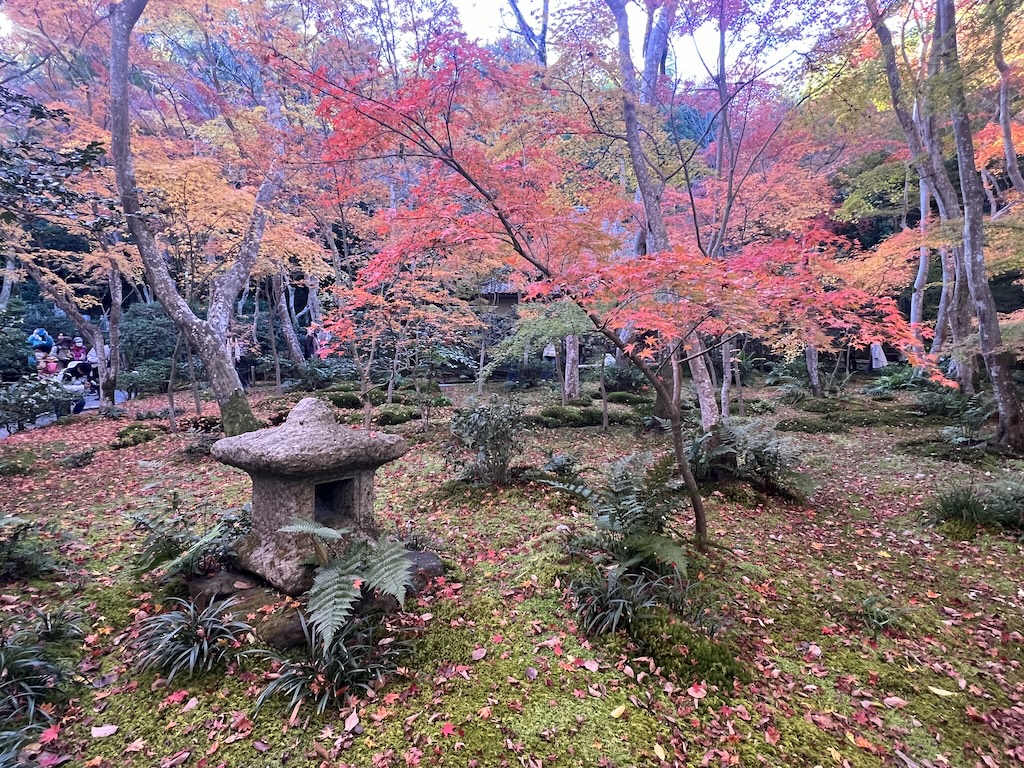
Let me just conclude this story with a final word about Taira no Kiyomori. In the Tale of the Heike, which tells also the story between Taira no Kiyomori and Gio, Taira no Kiyomori is portrayed as a man of evil. As a military leader his actions against rebellions have caused the destruction of a key temple in Nara and its Buddhist texts. He eventually met an unfortunate fate of a severe disease and died in pain. Karma certainly did its work on Taira no Kiyomori.
A Tour of the Gio-ji Temple
Allow for just a little less than a half hour to walk through this temple.
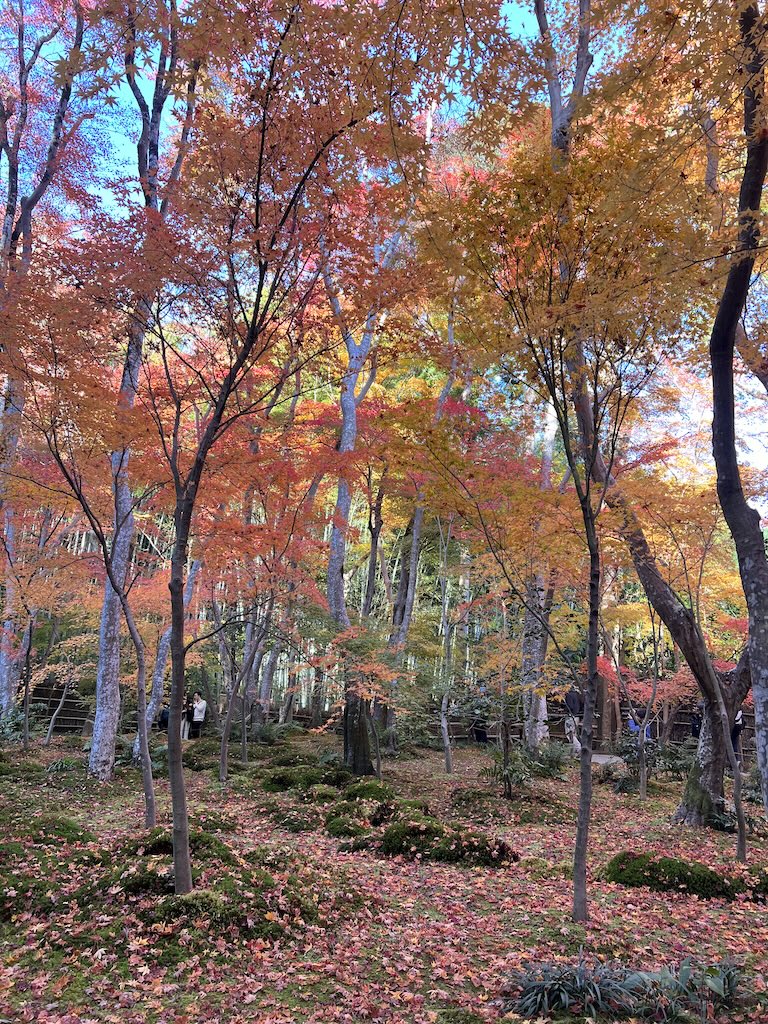
The Gio-ji Temple has the unique ambience that fully expresses the bittersweetness of its history. Thick thickets of moss-covered ground spread out before visitors in its small garden.
There was a certain sense of heaviness in the air. This part of Arashiyama has very dense shades that trapped humidity. In this time of the year, the autumnal colors had brighten up the whole space. Fallen red leaves laid a crimson blanket upon the thick moss.
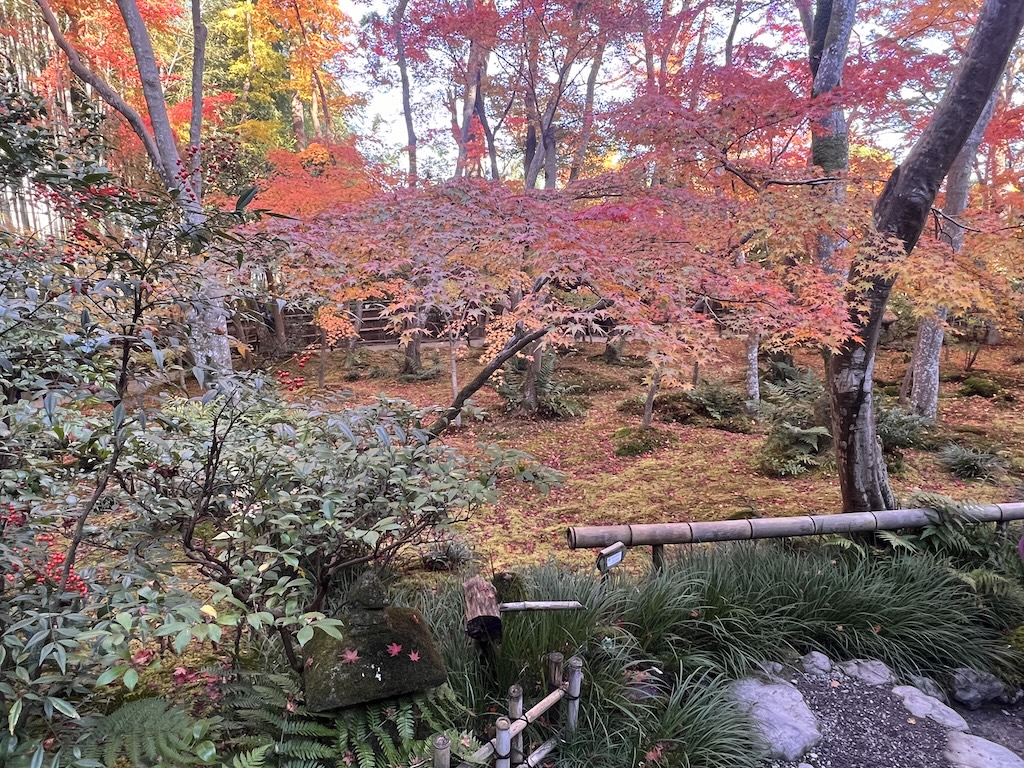
Certain sections of bamboo lined parts of the small garden, standing tall. Seeing its height reaching far into the sky above, one seems to reckon the extensiveness of hope as the source of life’s resilience.

The Gio-ji Temple is the perfect example of how learning about the history and legends of a heritage site is key to the appreciation of its physical beauty. In this small enclosure of a simple thatched roof temple and a small garden space, I could feel the spirits of the women that found sanctuary and closure here.
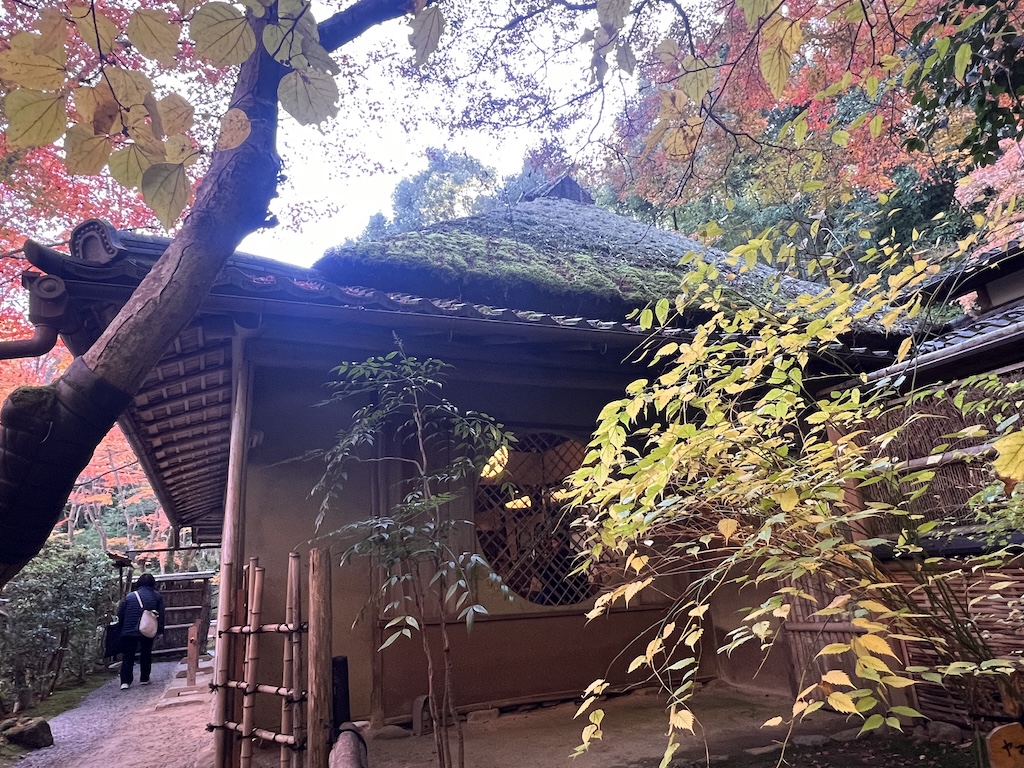
Before visiting the Gio-ji Temple, I had seen the Ryoan-ji Temple, the Kinkaku-ji Temple, the Otagi Nenbutsu-ji Temple, and the Adashino Nenbutsu-ji Temple. I was running out of steam. It was somewhat late for lunch. I sat down at a café for a pasta that was not really worth a mention. But I did have the food that I needed.
After lunch, I had no plans and in fact I wanted to go back to the hotel to rest. Then I saw a sign pointing to yet another temple. I could not resist, and I was glad to have visited Gio-ji Temple.
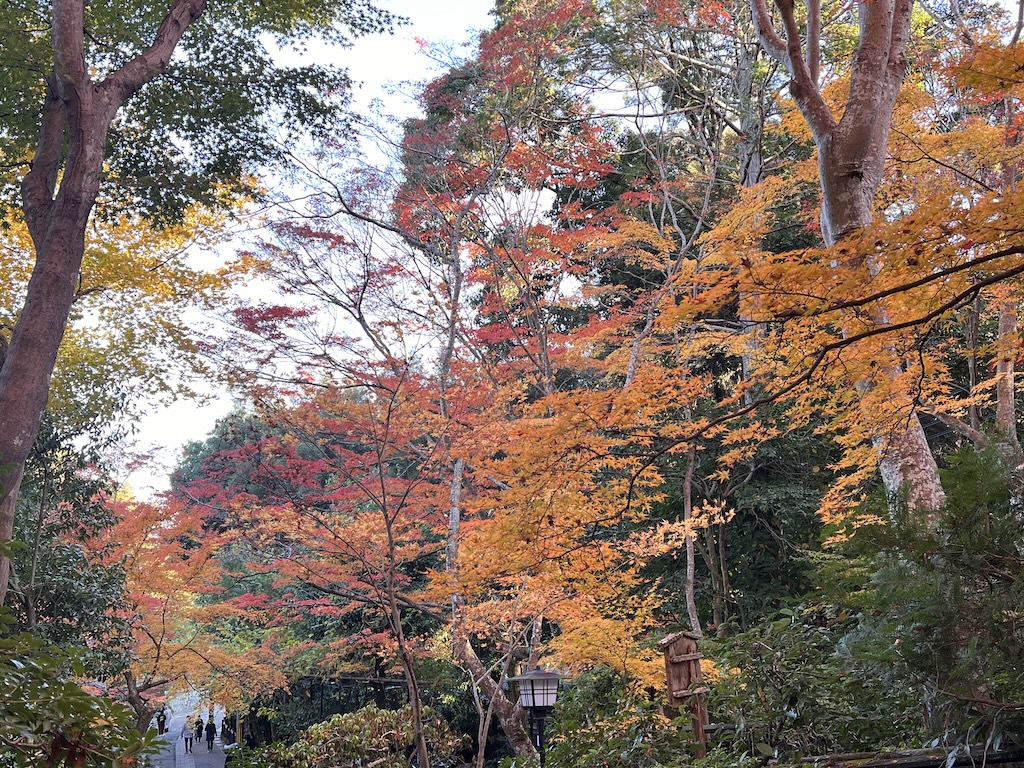
Sources
The Wikipedia on Shirabyoshi.
www.japan-experience.com, Gioji Temple: a Hidden Gem with a Tragic Love Story in Kyoto’s Arashiyama District.
